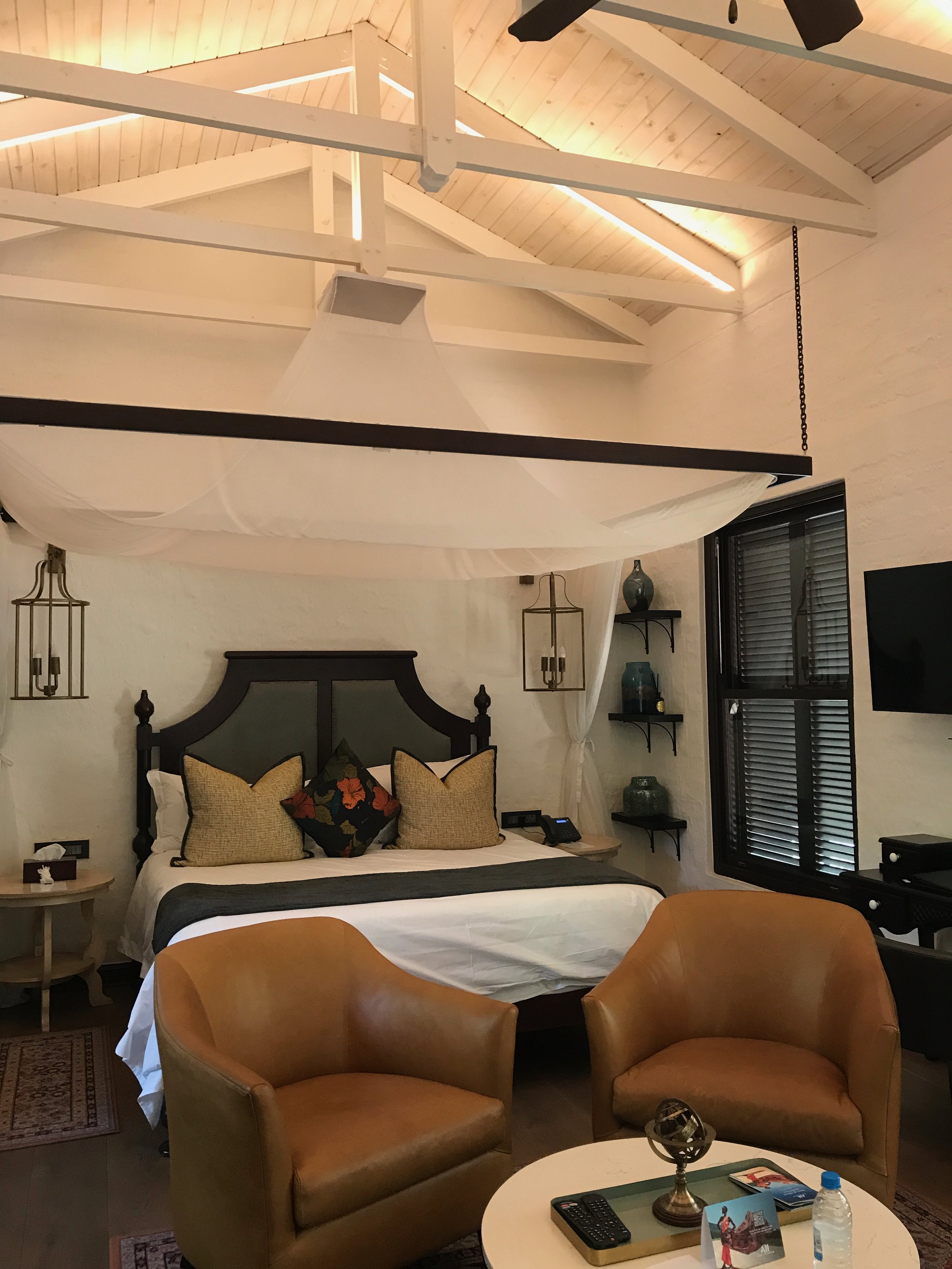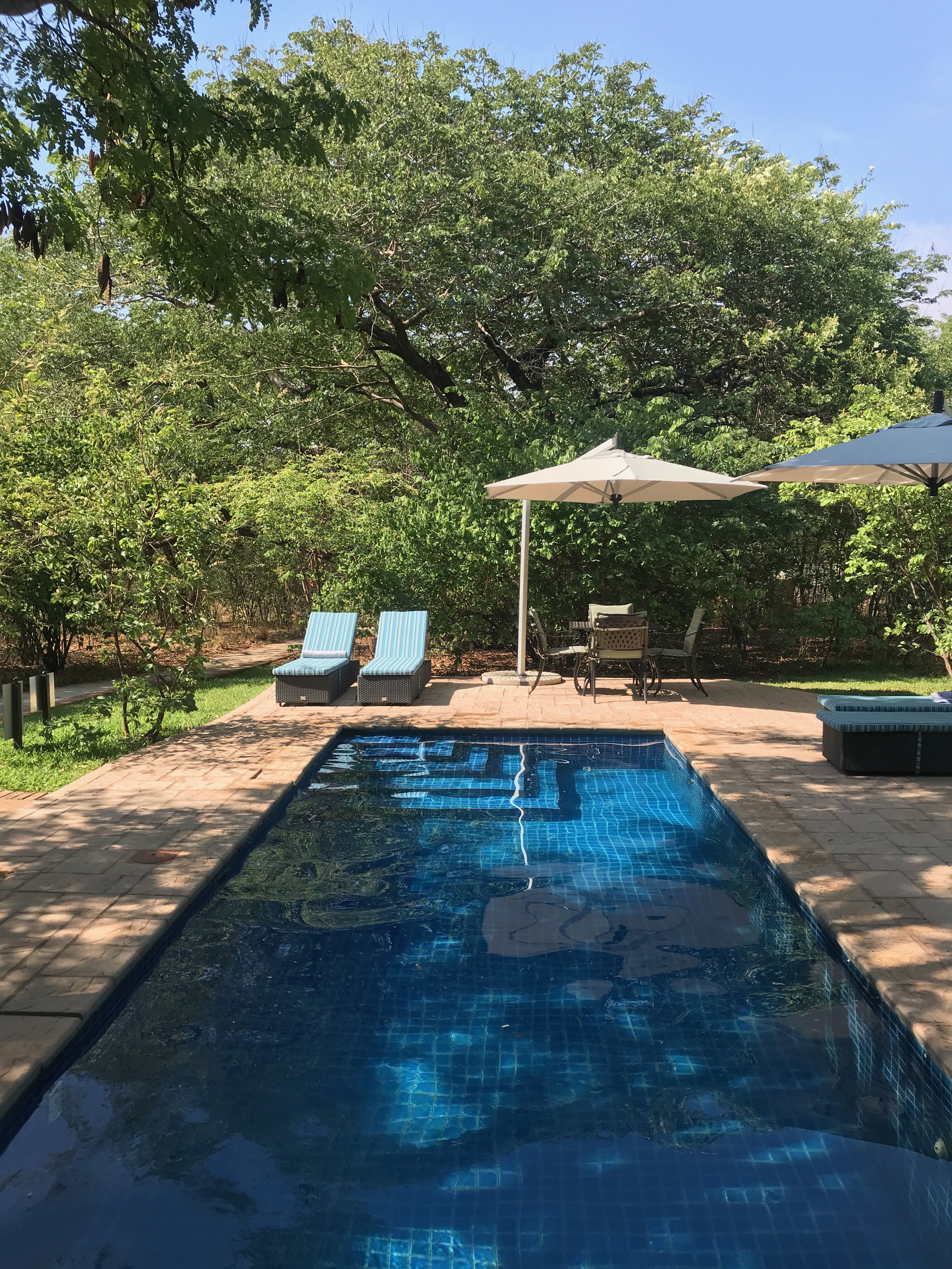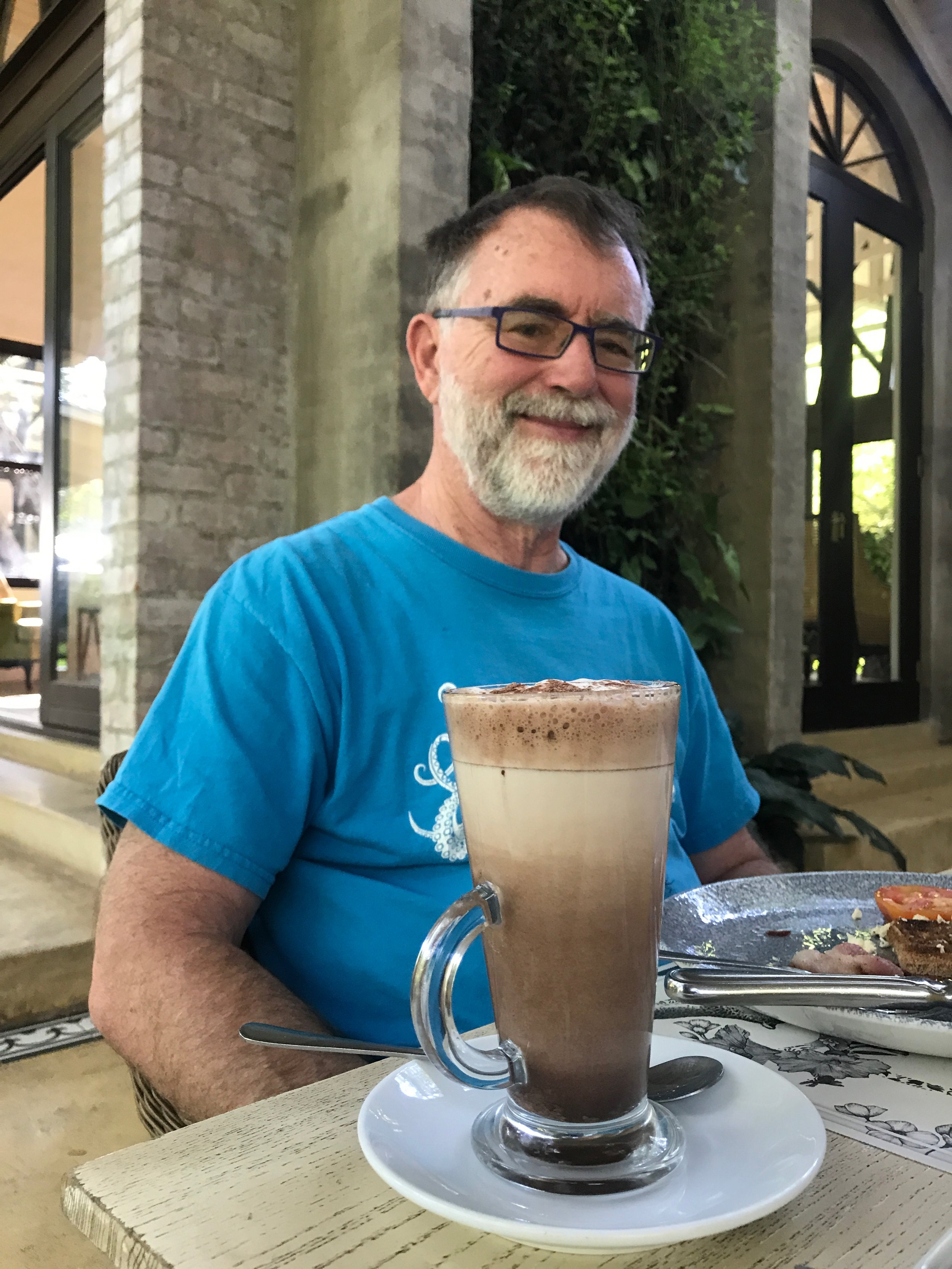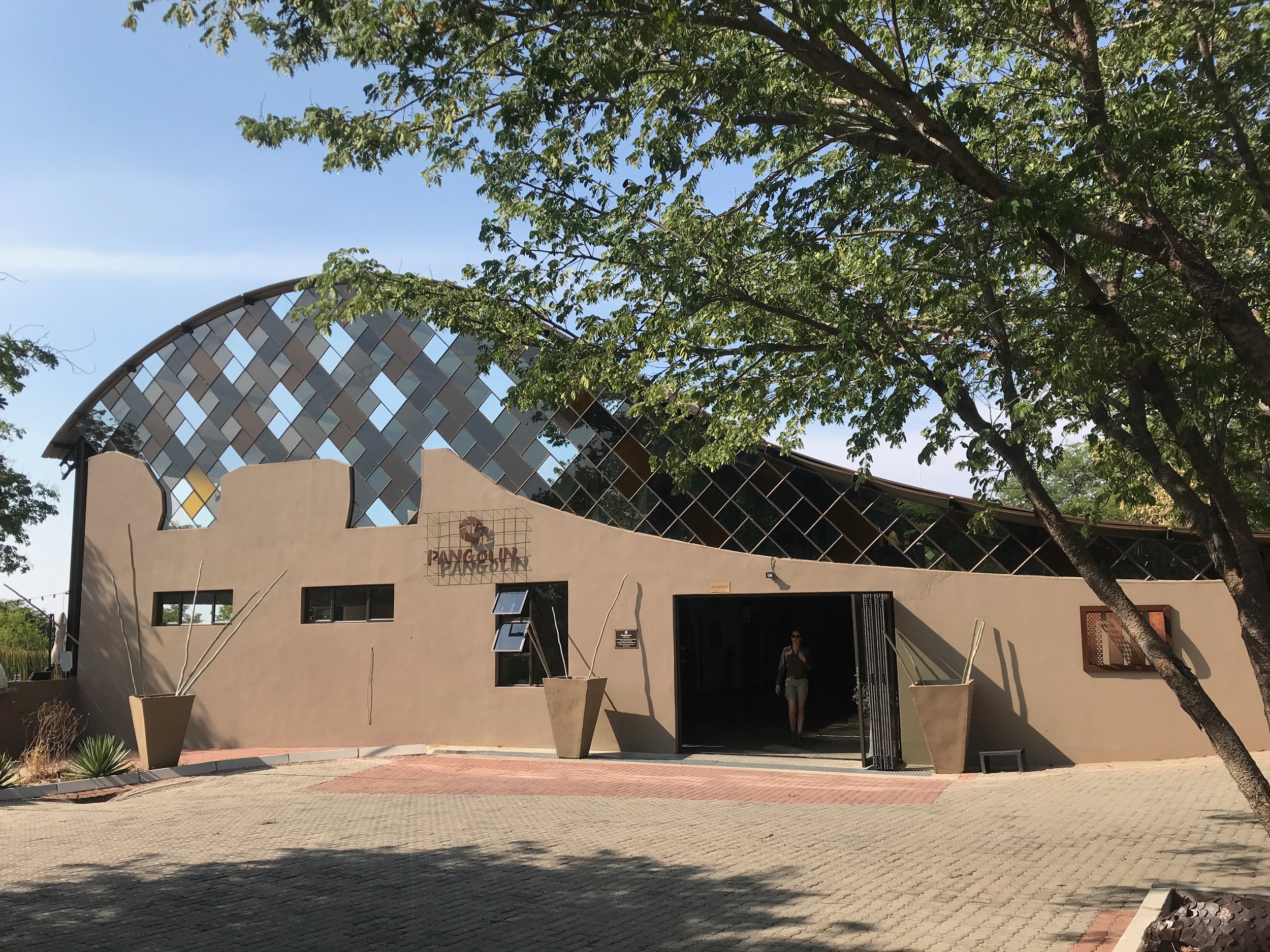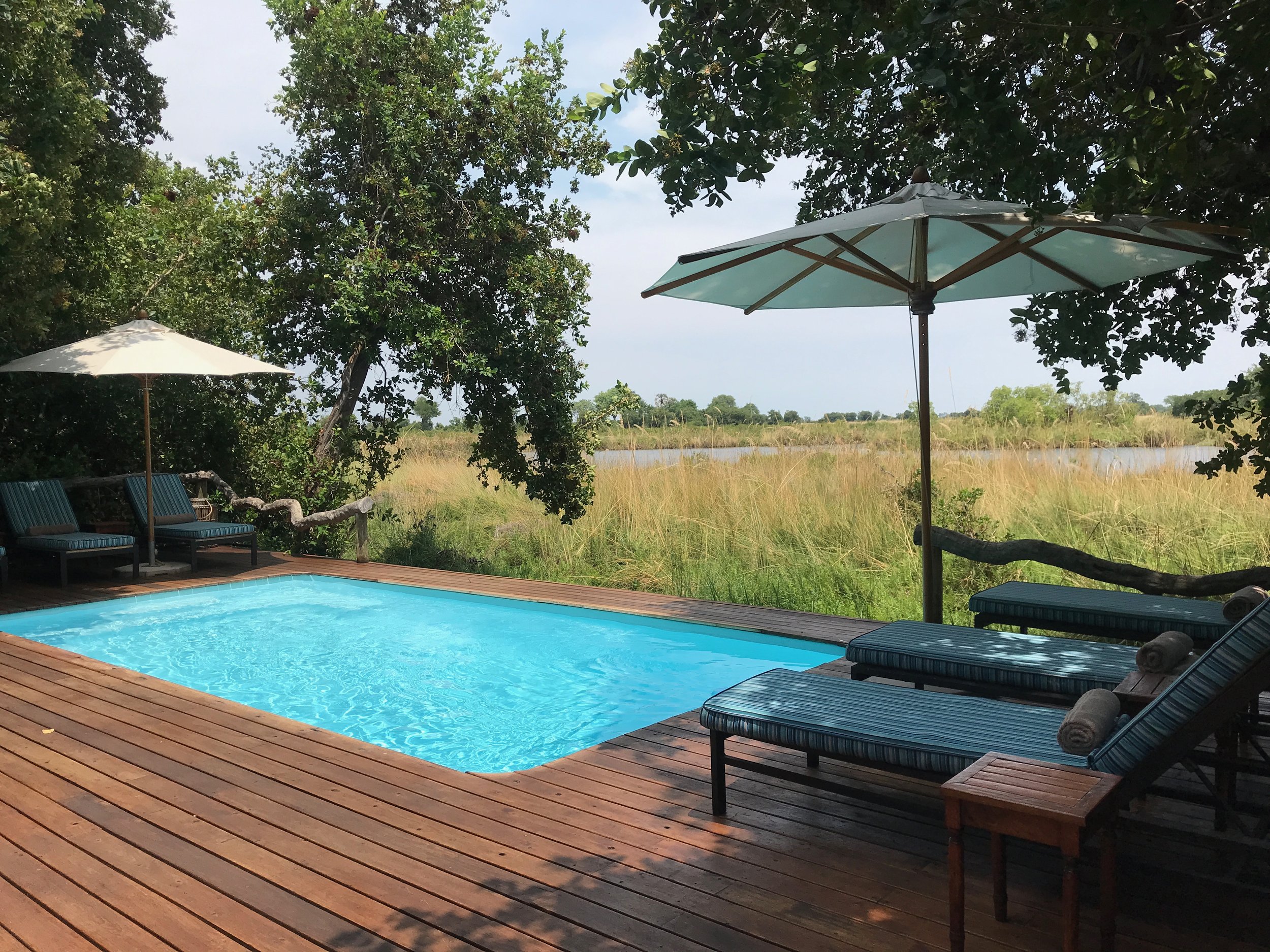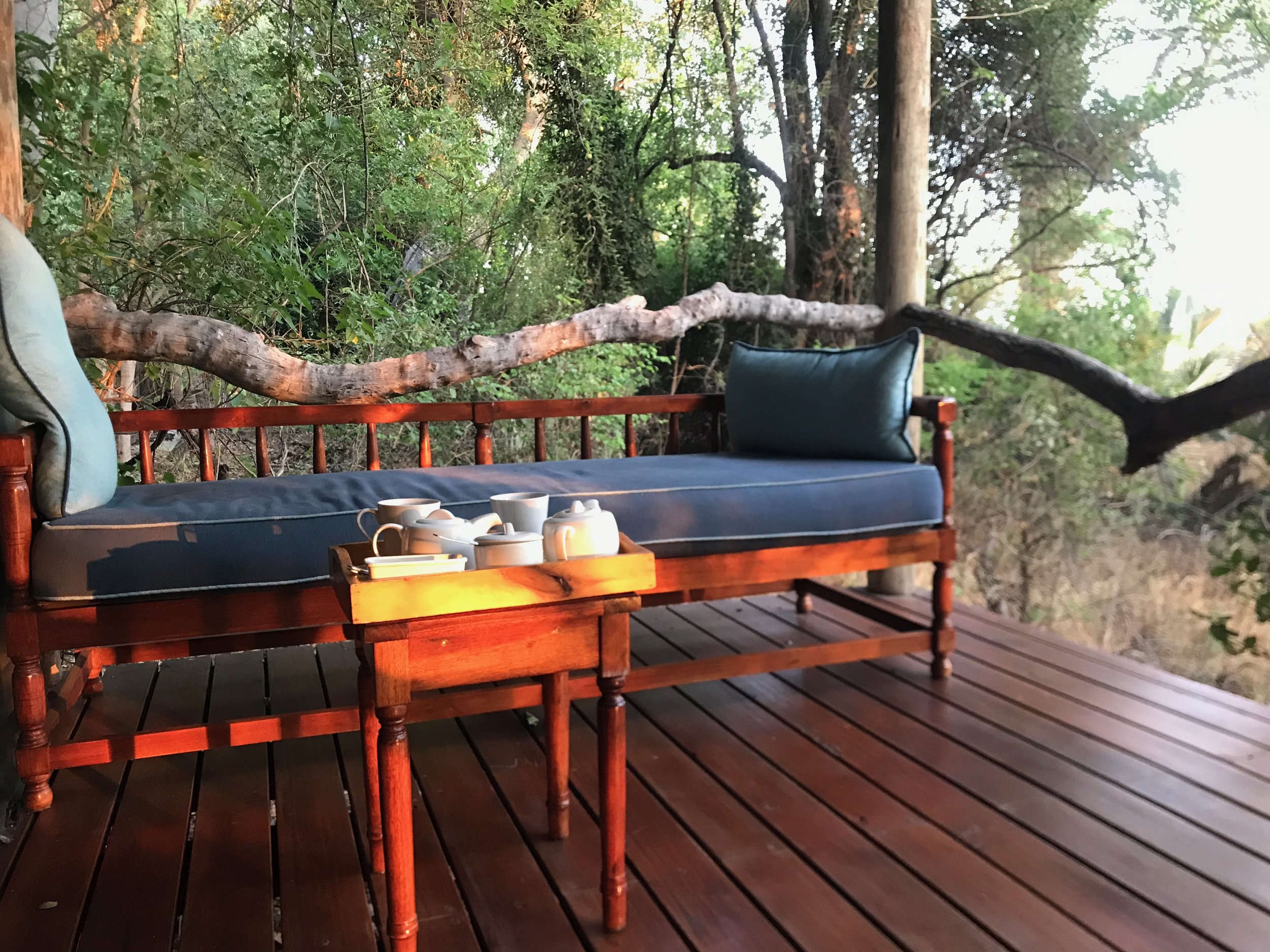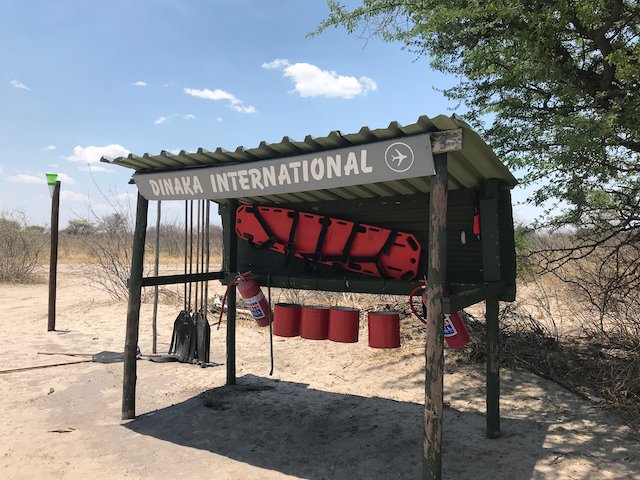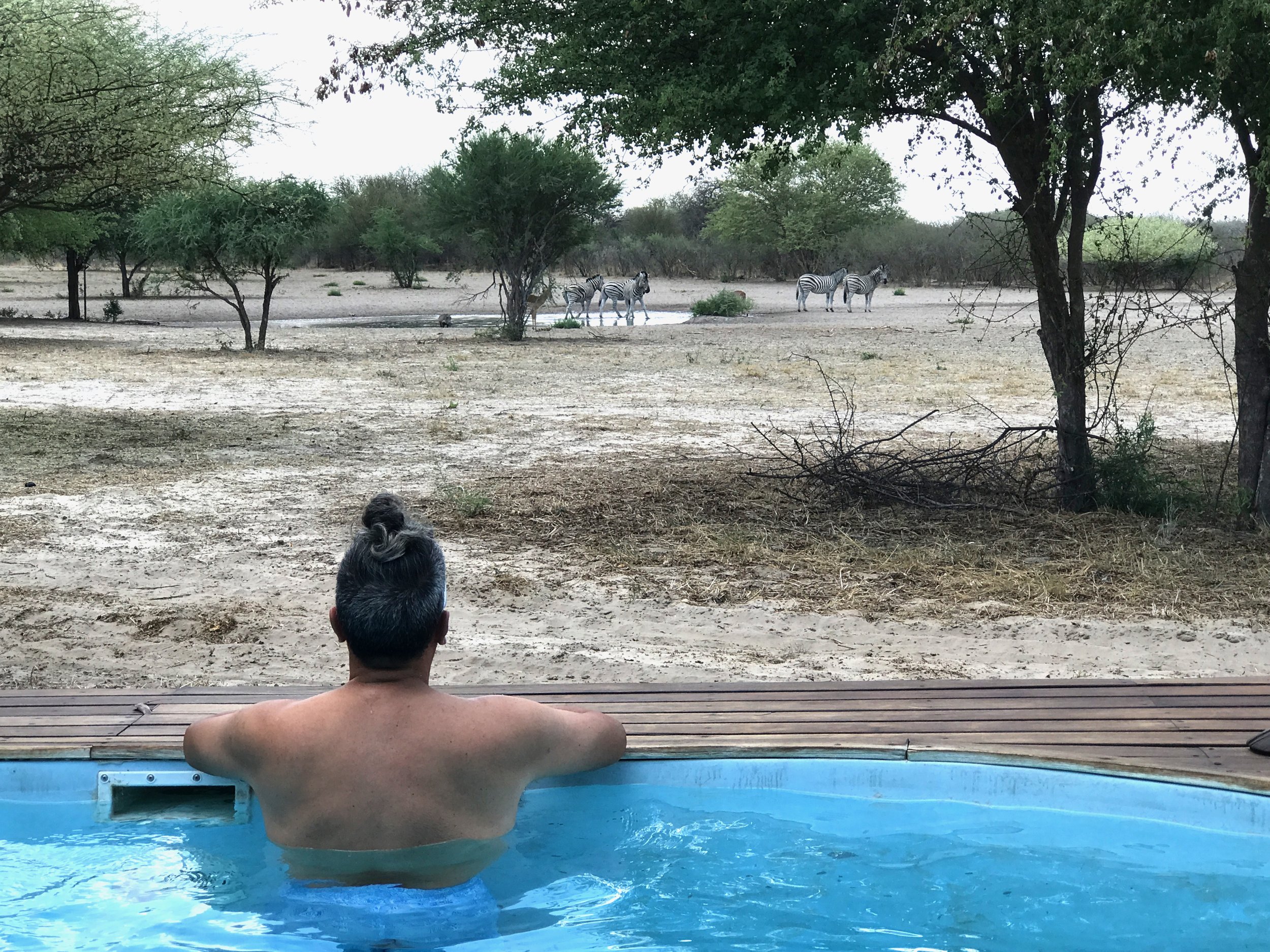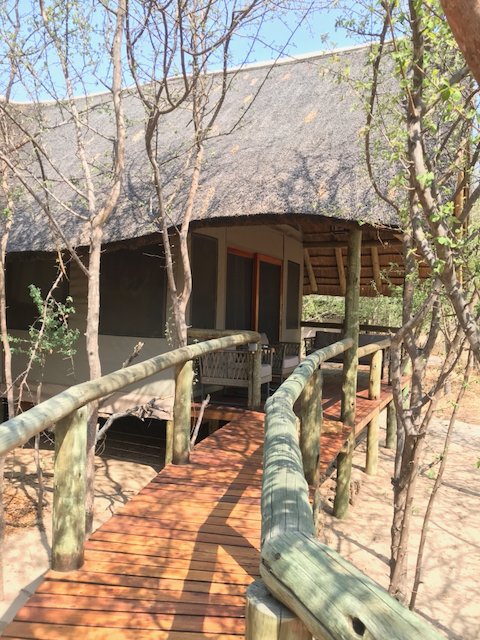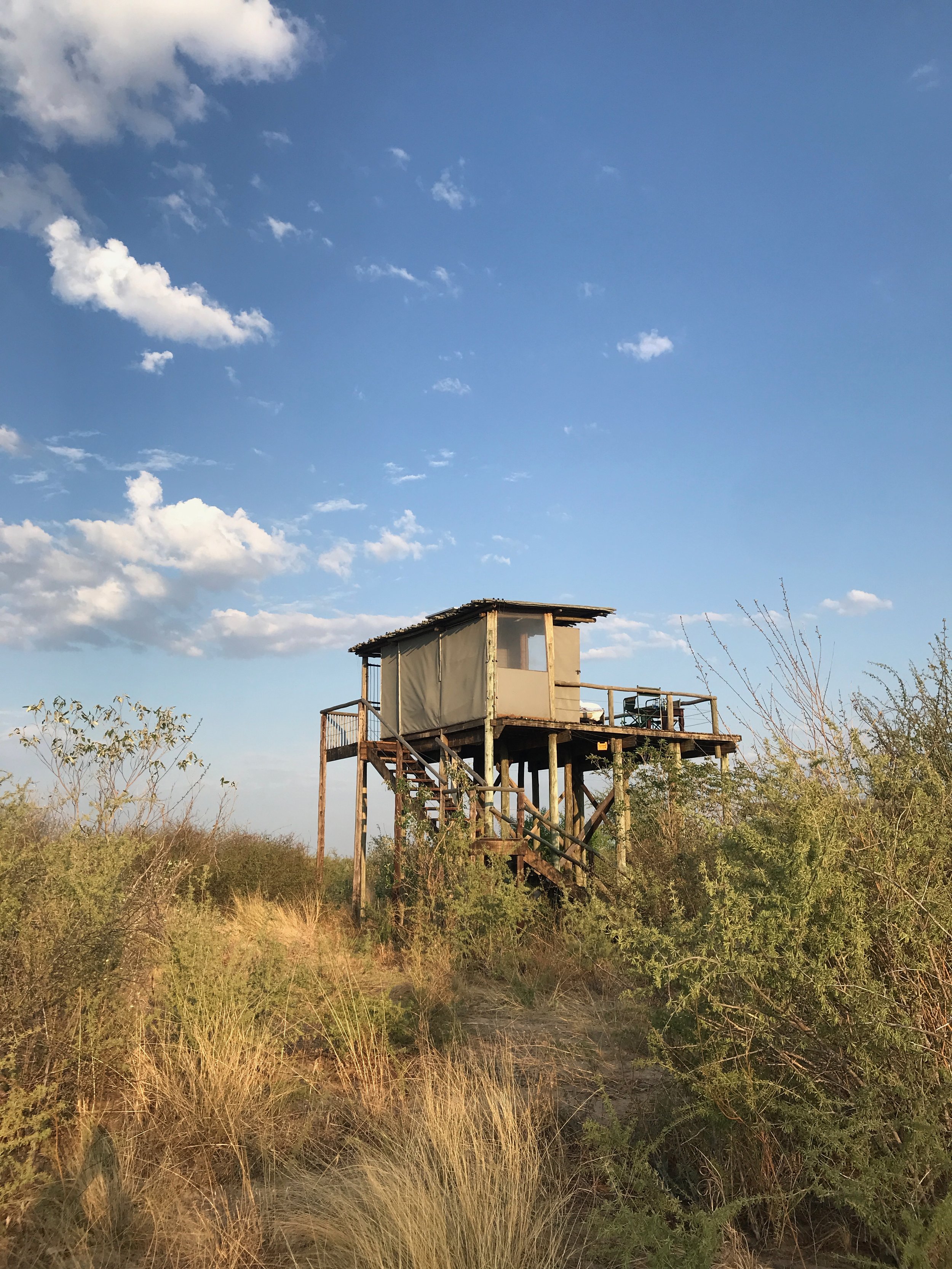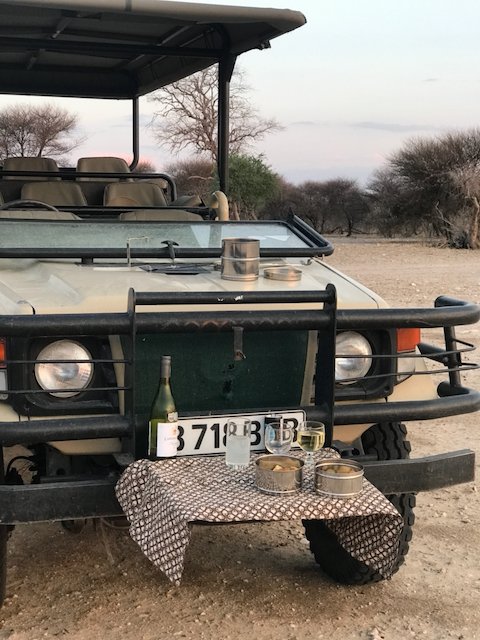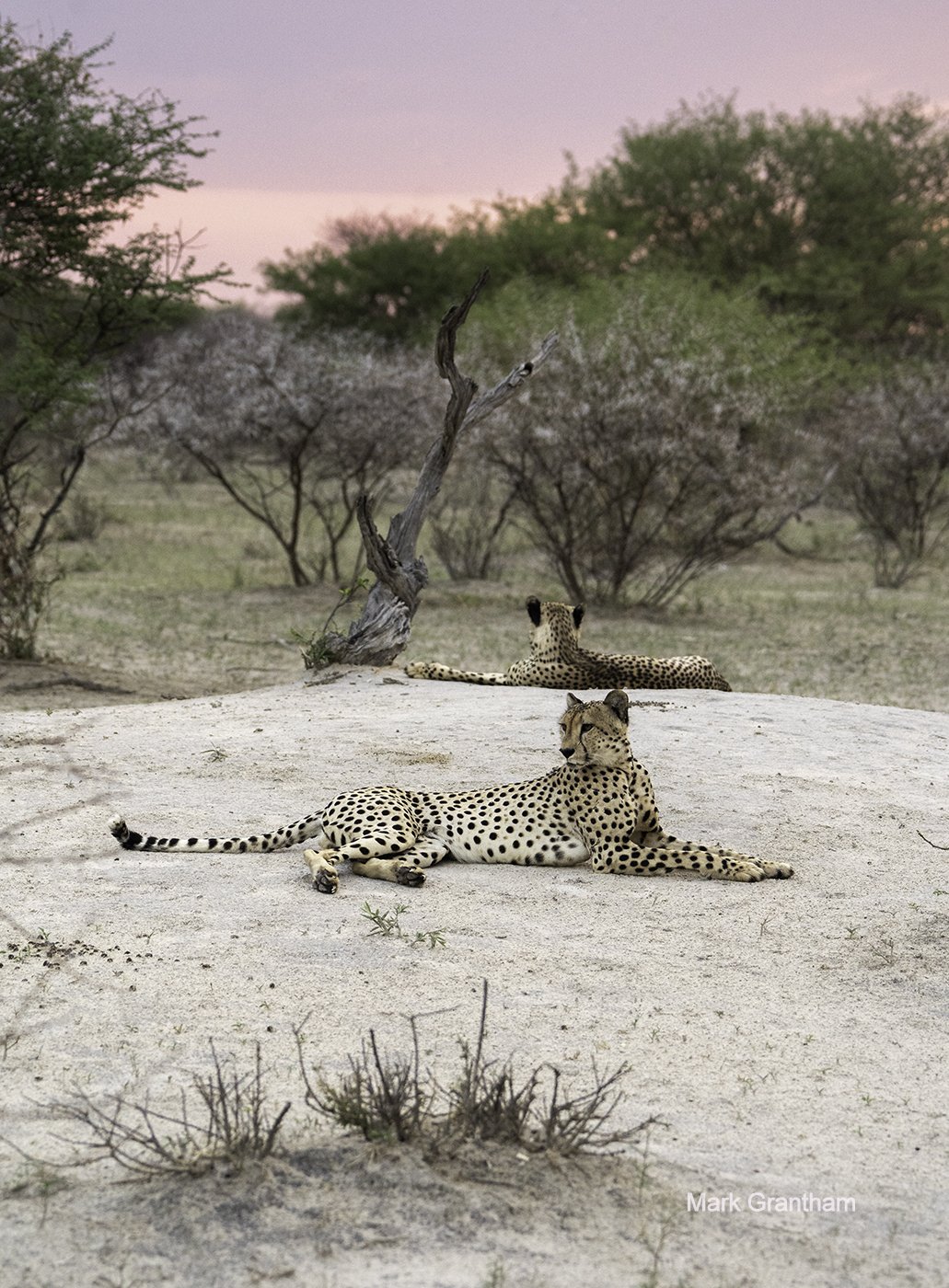Back from Zimbabwe, botswana & south africa…
Purely vacation for once, we returned from Southern Africa in early December, 2023.
Our Galapagos Travel family of travelers is a wonderful resource for planning adventures of my own - so many people are far more traveled that I am. For this trip I went with a recommendation from some of our past travel participants - thank you Donna & Gary! I contacted Pangolin Photo Safaris and couldn’t be happier with the resulting tour.
Under Pangolin’s assistance and suggestions we were able to plan a completely custom, and largely private, tour of nearly 3 weeks: 3 nights at Victoria Falls (Zimbabwe), 4 nights at Chobe National Park, 4 nights at Okavango Delta, 3 nights in the Kalahari Desert (all 3 location in Botswana), and 3 nights in Cape Town (South Africa). Add another 3 nights in the air on those long international flights and that’s 3-weeks. This was a longer itinerary than most travelers might plan, but in retrospect I would gladly have spent still longer in Botswana and South Africa.
After deciding who to travel through our next decision was when. I was pretty set on late 2023 because of work obligations at other times. October was an option but it was closer to high season so more expensive. November was edging into the rainy season and more affordable. Typical November weather in Botswana is clear mornings with clouds building during the day and an hour or so of rain in the afternoon before clearing again. Because October is drier the wildlife tends to congregate around water sources, whereas in November the wildlife might start to scatter a bit with water easier to come by. We were told that many photographers prefer November for the more dramatic skies. A further deciding factor for us was when lodges in Okavango and Kalahari could offer us private game drives giving us more schedule flexibility.
little bee-eater (Chobe National Park)
malachite kingfisher (Chobe National Park)
Our time in Zimbabwe was purposefully low key. Our goal was simple: rest up after the long flights, see Victoria Falls, and be ready to hit the ground running once we reached Botswana. Pangolin booked us into the lovely Mbano Manor Hotel in Victoria Falls. With just 18 gorgeous suites, all set within a walled old teak forest, the setting was lovely. A few birds flitted through the scrub forest and there must have been hundreds of frogs that came to life nightly as the sun set. The restaurant food was good, staff wonderful, and the pool cool and comfortable.
Mbanao Manor standard suite
just part of our palatial bathroom
Mbano Manor pool
Mike with his hot chocolate!
Pangolin had booked us on a 30 minute helicopter overflight of the falls for one morning - great fun! The only other confirmed plans we had for our time there was dinner one evening at Dusty Road Africa (thank you Jill & Glen for that recommendation). This small township restaurant features traditional Zimbabwean cousine (street food in some cases) in a delightful atmosphere. Easily one of the two best meals of our time in Southern Africa… They were recently awarded the restaurant of the year award in Zimbabwe. Dinner was a prix fixe menu costing $35 per person. By the way Zimbabwe uses the U.S. Dollar to no currency exchange needed. Also easy for travelers is that visas are issued on arrival to U.S. passport holders.
The Mbano Manor booked two additional tours for us: a falls walk, and a sunset cruise on the upper Zambezi River above the falls. The walking tour was ideal for getting a good perspective on the massive size of the falls (and this was “low water” season!)
Late morning on our 4th day in Zimbabwe Pangolin arranged for a driver to pick us up for the relatively short drive to Kasana, Botswana, and the Pangolin Safari Lodge. Total drive time was shy of 3 hours, on smooth tarmac roads, with completely painless boarder crossing formalities (no visas required). We were at the lodge in time for a snack, unpacking, afternoon tea, and a full afternoon excursion!
newborn elephants are always a tinge pinkish around the face and ears but this little one looks to be either lucistic or albino, so extraordinarily rare (Chobe National Park)
The Pangolin Safari Lodge is designed to cater to photographers of any skill level. You don’t have to be a photographer to savor the experience though! The lodge is located in the outskirts of the town of Kasane, just outside the Chobe National Park boundaries, and maybe a 3 minute drive to their riverfront dock. Pangolin specializes in exploring the park either by boat or safari jeep. As with most national parks, drives there are restricted to the dirt road network, so one tends to see a lot of other jeeps, all trying to see the same things. We only made a single drive in the park, although our highlight of that morning happened between town and the entrance gates - a family group/pack of 18 African Wild (painted) Dogs with what was left of an antelope kill. They were excitedly running around in the forest edge right next to the road! We were among the first jeeps to see them and stop, and an hour later we were the last jeep still with them as they moved off. All the jeeps from other lodges clearly had set schedules no matter the wildlife spotted along the way. We did have a nice drive in the park, and largely avoided any jeep traffic, except when near a couple of lions on the hunt, or the briefest of peaks at a leopard 90% obscured high in a tree.
Pangolin Safari Lodge really emphasizes seeing the wonders of the national park from the river, where you have far more flexibility and there is no crowding. They have a small fleet of specialty photo boats that carry just 8 participants (plus a photo leader and a guide/driver). Passenger seats are in a single file row, front to back - seats swivel so you have amazing views to either side of the boat and each seat has a camera gimbal mount so you and your camera can be ready in an instant for whatever might be happening. And there was always so much happening! There is also lots of space for camera bags, as well as areas on either side of the seats so you can sit on the floor to shoot from a lower angle. Conversely we saw other boats with the travelers packed in like sardines where there would be no way to see what was happening on the other side of the boat (we saw one boat where guests were seated in rows 6 abreast and with at least 50 people on board!)
Pangolin safari lodge
Pangolins safari lodge deck, fire pit and pool
the Pangolin rooms all have lots of counter space as well as private decks and lovely big bathrooms
Chobe might be best known for the tremendous numbers of elephants found in the area- upwards of 135,000 elephants! The Chobe is also a birders paradise! And I’m not talking about LBJ’s (little brown jobbies) - I’m talking about wildly colorful and wonderful birdlife!
Lots of the magic of Pangolin’s programs comes from there photography hosts who accompany every outing. We were lucky to have Janine Krayer on 6 out of 8 excursions, and I can’t imagine a better guide. She offered a wealth of photo tips, backed by humor, logic, and stories of her own experiences.
African wild dog pups (Kasane, outside Chobe national park)
The Pangolin Lodge seasonal schedule is ideal for making the most of the best light, and wildlife behavior:
4:30 wake up / 5:00 light breakfast / 5:30 morning excursion / 10:00ish return to lodge, followed by brunch / 3:00pm high tea / 3:30 afternoon excursion / 7:30 drinks by the fire pit / 7:45 dinner on the deck. Many of the guests retired to the bar after dinner, but for me the comfy bed was calling me!
In addition sometime during the morning excursion coffee and biscuits would be served, just as drinks and cookies would be served on the afternoon outings. It all had a very decadent feel without being in the list bit stuffy. Sunrise in November is just before 6am, and sunset is around 7pm. The food was consistently wonderful - the best of our 3 game lodges.
All three lodges we stayed at in Botswana were all-inclusive: accommodations, twice-daily excursions, entrance fees, meals, snacks, open bar, laundry, WiFi… Bush flights between the lodges were also included.
early morning with the hippos (Chobe National Park)
giant kingfisher
purple heron (Chobe national park)
African fish eagle
African open bill (Chobe national park)
pied kingfisher (Chobe national park)
Great egret (Chobe national park)
welcoming the next generation of impala
gotta keep up with the adults!
African darter with a meal
baboon (Chobe national park)
Elephants at “Ely Bay” (Chobe national park)
From Kasane it was a relatively short bush flight to the Shinde Lodge airstrip in the northern Okavango Delta region. Similar to Chobe this is a region dominated by water. Rather than in the national park, Shinde Lodge has a concession of many thousands of acres adjacent to the park. The subtlety of this distinction is that you do not have to stay on park roads here, but can venture off road in search of wildlife and close encounters. Shinde offers multiple ways to experience the area, from daytime and night drives, motorboats on the delta, or a mokoro, which is a dugout poled through the shallow waterways by a local tribesman standing at the stern.
We had paid a bit extra at Shinde as well as the following camp, Dinaka, to have all private outings with our guides to allow for a more flexible schedule if needed. The reality is that these boutique camps typically only put 4 guests in a jeep so all the experiences are nearly private anyway.
common areas and decks overlook a permanent lagoon.
The Shinde pool, with a mix of welcome shade and wonderful views.
just before sunrise daily room service would deliver pots of hot chocolate to our deck as a wake up call
sunset in the Okavango
papyrus along the delta shoreline
water lily of the delta
Shinde Lodge is operated by Ker & Downey, and considered their flagship lodge. Eight gorgeous en-suite tents accommodate a small number of guests meaning it never feels crowded. They also cap occupancy at 4 guests on game drives so everyone has a “window” for wide open views. A roofed dining area, an outdoor dining deck, lounge, reading area are all connected via a series of boardwalks high in the air - almost like interconnected posh tree houses.
mother and son leopards (Okavango national park)
male leopard (Okavango national park)
Woodlands Kingfisher (Okavango Delta)
ostrich (Okavango Delta)
Squacco heron (Okavango Delta)
The Kalahari Desert was almost an afterthought to our planning. I knew nothing about the region but the Pangolin agent convinced me that it couldn’t be missed as it offered habitats so starkly different from anything else we would see. She was right!
Departing Okavango after a final morning outing a series of several bush plane hops had us at Dinaka Lodge time for lunch. All the bush flights seem to be “locals” stopping at several lodges along the routes based on the needs of the day. Our second stop out of Okavango was Maun, where the plane had a quick refuel before taking off. This time we were the only passengers on the plane and when we landed it seemed interesting that the pilot spent a bit of time carefully parking the plane. Turns out he was going to spend the night at the lodge himself because he had clients to collect not far away the next morning!
My first impression as we stepped out of the plane was to be assailed by the heat. We were told it was in the mid-40’s, which translates to around 115 degrees to us! My second impression was that the desert was really a very dry scrub forest, and not a “sand dunes” sort of habitat.
The lodge has a couple of deep bores used to keep several waterholes filled year round, including one right in front of the lodge itself. Another waterhole has an underground bunker-style concrete hide where one can enjoy a cool shady spot to sit and marvel at the wildlife coming for a drink, seeing them from nearly water level. Another waterhole has an above ground hide. In many ways these hides are not necessary as we never encountered any skittish wildlife even when we were in the jeeps. The biggest advantage of the bunker and the hide is the lower angle from which you can take photos (jeeps are tall!).
From the first moments out with our guide here we were in the thick of wildlife! Our first “big game” sighting was family group of 3 white rhinos (we were asked not to post photos, or at least remove any geotag location info from posts to keep their exact location a secret from poachers). You’ll just have to trust me that the mom and her two young (from different years) were striking! Later that afternoon we encountered a family group of 14 lions! Two big males, three females, and nine cubs - amazing!
Spotted Eagle-Owl (Kalahari Desert)
Are you my mom? (Kalahari Desert)
yellow-billed hornbill (Kalahari Desert)
Dad’s watchful eye (Kalahari Desert)
The Dinaka bunker provided a unique window to the wildlife action around a waterhole. They really couldn’t see us back in the darkened space, while we had amazing views out!
Impala (Kalahari Desert)
Impala (Kalahari Desert)
oryx (Kalahari Desert)
Dinaka Lodge is again operated by Ker & Downey and just wonderful!
every lodge seems to have their own airstrip
watch the parade of wildlife at the waterhole, from the pool!
sundowners in the bunker!
the tents and decks were shielded from the sun by a gorgeous thatched roof
sleeping under the stars in the tower was amazing, including the nighttime serenade of wildlife!
sundowner spread in the bush; drinks to order, snacks and the setting sun
Wildlife “List”
The overall wildlife encounters on this trip were off the charts. I’m not a list maker but if I was, our sightings included the big 5 (or 6) that everyone wants, plus much much more:
29 big cats… including 20 lions, 6 leopards, 2 cheetahs, and a caracal!
elephants in untold numbers, including that pink baby,
white rhino, cape buffalo, and hippo,
hyena & side-striped jackal,
wild dog/African painted dog,
giraffe, zebra, wildebeest, warthog,
multiple antelope species such as impala, greater kudu, waterbuck, steenbok, oryx, bonte bok, reedbuck, teesebe, red lechwe… (Cape buffalo, giraffe and wildebeest are actually all in the antelope family)
baboons & vervet monkeys
scrub hare & ground squirrel
leopard tortoise, crocodile, long reed frog and Angolan reed frog
And then there are the birds… I can’t begin to list them all, but with the diversity of habitats visited the numbers were huge. We saw at least 5 species of kingfisher, 3 species of bee-eater, 2 species of hornbill, rollers, weavers, sugar bird, half a dozen species of heron, plus egrets, storks, spoonbill & ibis, dippers and darters, flamingos and myriad smaller waders, geese, jacana, terns, ostrich and of course vultures, pale chanting goshawk, yellow-billed kite, bateleur, African fish eagle, and spotted eagle-owl… to name just a few!
warthog after a relaxing mud bath!
Our last morning in Botswana I was mildly disappointed by the absence of any cheetahs this trip. The guide offered that there is a waterhole cheetahs occasionally visit at sunrise, but it’s a long ways away. I asked if there was time to get there and he said only if we rush directly there… What followed was an exhilarating high speed safari drive, in the near dark, culminating with seeing two beautiful young male cheetahs (brothers) lounging as the sun rose.
cheetah at last! (Kalahari desert)
A late morning bush plane took us from Dinaka Lodge to the city of Maun, where we met our our commercial flight on to Cape Town. Arrival formalities were easy (again no visa needed) and in minutes we were on the road to Cape Town with our transfer driver. Along the way he explained some of the history of apartiad from his first hand experiences as we passed different neighborhood townships. Our hotel was the lovely Commodore, located just a block from the V&A Harbor complex. The view from our top-floor room balcony took in both the harbor and Table Mountain!
For Cape Town Pangolin paired us with the local travel company Escape+Explore. We had two custom full-day private tours booked so we could see lots of the area in a limited amount of time.
Our first day was a 10- hour circuit visiting fishing villages, Boulders Bay, the Cape Peninsula, and …
We enjoyed an extraordinarily lavish picnic on the beach for lunch, plus made coffee and ice cream stops through the day.
Our guide, James Bain, was extraordinary - at least for us he was the perfect guide to experience the day with. He grew up, and still lives, on the peninsula we circled the first day. He had an amazing enthusiasm for sharing his home turf and just what makes it so special. He was gobsmacked when we came across a caracal next to the road - it was only the 3rd time he’s seen one! We got a good view, but not so long that I got a photo.
Our next day was busy again, including a visit to the top of Table Mountain, a driving tour of historic Cape Town, a walk around the colorful Bo-Kaap neighborhood, and then off to the wine country!
At Chefs Warehouse Beau Constantia we enjoyed our second absolute standout meal of the trip. Between the food, wine pairing, service, and ambiance I was sure we must be in a Michelin starred restaurant. Simply amazing! Once we were drug away from the restaurant our next visit was to the Klein Constantia Vineyards for a private tasting.
Really everything we ate in South Africa was awesome, and incredibly affordable. That grand lunch was included in our tour, but we saw the prices and it was roughly US$50 per person, and another $25 each if you added the wine pairing of half a dozen glasses!
I could easily have spent several more days in South Africa. I’ve recently learned of a great birding wetlands just outside Cape Town, and there are so many more restaurants (and wineries) I could try!
South African penguin (Boulder’s Beach)
Cape Sugar Bird on protea (Cape Peninsula of Table Mtn. National Park)
A $6 lunch: yummy deconstructed chicken Caesar salad at a French bistro in Cape Town
In was inevitable during our time in Southern Africa to compare the experiences and wildlife to our past trips to East Africa/Tanzania. Both destinations absolutely amaze the visitor! I came away feeling like in Tanzania there might be greater overall numbers of large species - certainly we have seen far greater herds of wildebeest, zebra and giraffe in Tanzania. It feels like on game drives in Tanzania you are nearly tripping over wildlife as everywhere you look there is something. On the down side there are also far greater numbers of safari jeeps, and largely all confined to roads in Tanzania, so there is a greater potential of having a group of jeeps surrounding any particularly magical moment, making it suddenly less magical.
In Botswana we really felt remote: the conservancy model of game lodges hugely limits the number of other jeeps one might see, making most experiences feel like it is just you and the wildlife. The concentrations of wildlife can be smaller though, with occasional drives of 20-30 minutes without seeing anything big. On the river in Chobe however you are essentially in the midst of huge numbers of wildlife at all times. These extended magical moments without other jeeps or boats around are priceless, and they happened over and over again at Chobe, Okavango and Kalahari.
When we started planning this trip the destination I was most interested in was the Okavango Delta, but in retrospect both Chobe and the Kalahari where even better for wildlife and photography (except of course for those leopards in Okavango).
The other surprise was Cape Town. We went there largely because we were nearby and it’s easy to fly home from South Africa, but it ended up being a highlight too!
Bonde bok, lounging on the beach (Cape Peninsula, Table Mountain National Park)
brown-hooded kingfisher (Chobe national park)
The weather throughout our trip had the guides all commenting. The rainy season is very late this year, and the temperatures are high - unseasonable you might say! I think our hottest day in Chobe was 103F, whereas it was more like 115F a couple of days in the Kalahari. Nights everywhere cooled off nicely so sleeping with just a couple of fans was no problem (neither Shinde nor Dinaka have air conditioning, but tents have multiple fans). We only had rain once in three weeks, but it was a heck of a downpour in the middle of the night for a couple of hours! Because the land was so dry no lasting puddles formed, and the wildlife was still all drawn to the river, delta or water holes.
There were very few insects to bother us, and all beds in Zimbabwe and Botswana had mosquito nets. I think the only place mosquitos found me was the dining terrace at Mbano Manor. I don’t recall even using insect repellent in Botswana. While I’d brought several long sleeve shirts and khaki pants for sun & bug protection I really didn’t need them - instead I was always in shorts and short sleeve shirts because it was hot and there were so few bugs, and the boats and jeeps were all roofed!
Little Bee-eaters with dragonfly snacks (Chobe National Park)
it’s just a yawn, really! (Okavango Delta)
The Pangolin difference when it comes to photography: Their safari lodge adjacent to the Chobe national park is their headquarters. Their programs really get visitors out and shooting at the best times of day, including before those first rays of sun in the morning, as well as after the sun has set in the evenings. Their pace is very leisurely allowing everyone time to get their images. Their group sizes are small, capped at 8 in the boats, with both a photo host and a guide/driver. Seating in the boats is 8 swivel seats in a single file row bow to stern. Each seat has a camera mount on a gimbal with a full range of motion that moves with your seat. Additional space on the floor of the flat-bottom boat has padded sides so you can also sit on the floor to shoot steadily and be even closer to water level. Any guests who would like to borrow a camera, or lens, is welcome to at no charge - they even give you a memory card. The loaner cameras are Canon 90D’s and the lenses are Sigma 200-600mm. With the cropped sensor on the 90D that lens tops out at reach of something over 900mm. A Pangolin photo host accompanies all excursions, on hand to make suggestions, encourage, and offer advice (as well as join the guide in identifying all the wildlife, and help with predicting behavior). The photo host can also help back at the lodge in the editing room by giving talks on editing your images (the editing room as a couple of computers for guest to use too), plus lots of space for anyone bringing their own computer.
What we hadn’t anticipated when we moved on to Shinde Lodge and Dinaka Lodge was that our guides there had gone to Pangolin’s Chobe lodge for training in photography (these are lodges that Pangolin regularly sends guests too). This mostly included making a point when possible to be on the right side of the action for the light, or occasionally reminding one of lighting challenges or other tips. Also, like at the Pangolin Lodge, we were out at the right times of day for the light and behavior, and there was zero rush to move on until you were ready. While both Shinde & Dinaka have daily schedules for meals and outings, this are customizable if you have special requests.
You don’t have to be a photographer to get the most out of these programs. Whether you have a camera in your hands or not, you are out in the field at the times of day when the wildlife is most active so you will see the most behavior, you’re in a small group, you are with an expert guide, and you’ll feel like you have the magic moments all to yourself without a crowd of jeeps all vying for a vantage point. Yes, you might linger over something longer than you might think warranted on occasion while the photographers get their shots, but if you enjoy observing wildlife you should never be bored.
Essentially I have nothing but praise for Pangolin Tours. They quite simply made our experiences what they were - out of this world! The photo host even convinced me to start shooting in RAW, and coached me through editing those files in Lightroom to get the best out of my shots.
Click on the links below for more info:
• Pangolin Photo Safaris
• Shinde Lodge
• Dinaka Lodge
• Mbano Manor
• Escape+Explore Cape Town
• Dusty Road Africa
• Chefs Warehouse Beau Constantia
travel journal text and photography by Mark Grantham


